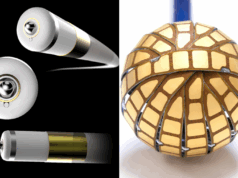nContact has announced that an article was recently published in the Journal of Cardiovascular Electrophysiology chronicles the development of an new interdisciplinary approach for the treatment of atrial fibrillation, the convergent procedure, and illustrates the strong success of the site’s programme. Outcomes were determined by the most stringent methodology, 24-hour loop recorders, which demonstrated unparalleled success in this patient cohort. Physician reaction to the paper has been positive.
Lead author of the paper, Borut Gersak, chief of Cardiac Surgery, University Medical Center, Ljubljana, Slovenia, said: “This paper may be reviewed in hindsight as a pivotal paper in determining the true standard for success of an ablation procedure. The paper documents the evolution of a closed chest, truly minimally invasive interdisciplinary procedure, the Convergent Procedure, its early challenges and lessons learned, the protocols developed to improve and insure clinical safety, and the successful patient experience as monitored by a continuous loop recorder, Medtronic’s Reveal XT. The convergent procedure has proven itself under today’s most stringent monitoring standards, and sets a new and higher standard for clinical and patient outcome success.”
Kenneth Civello, cardiac electrophysiologist, Our Lady Of The Lake Regional Medical Center, Baton Rouge, Louisiana, USA, said: “The data is impressive, and the results are consistent with results we have obtained utilizing the Convergent Procedure in our hospital, and abstracts presented at Boston AF Symposium and the Heart Rhythm Society Scientific Sessions (HRS). This is important because the procedure can be standardised to obtain consistent results among a variety of sites. The results with patients in sinus rhythm off anti-arrhythmic drugs (AADs) of 74% are even more impressive because 94% of the patients were persistent or long standing persistent patients. HRS defines catheter outcome success as ‘freedom from AF and off AADs at 40%’ for persistent patients and 30% for long standing persistent patients.”
Paul Mounsey, chief of Electrophysiology, University of North Carolina Hospital, Chapel Hill, North Carolina, USA, said: “This is an important paper because the Convergent Procedure addresses atrial fibrillation in a scientific manner by addressing both endocardial and epicardial substrates in a comprehensive anatomic approach. Its success can be related back to the large body of literature on lesion patterns, lesion completeness, substrate activation, anatomical remodeling, atrial stretch, and atrial function. This is not a potential magical silver bullet, but rather the use of an increasingly relevant and rapidly growing ablation technology to augment existing strategies.”









